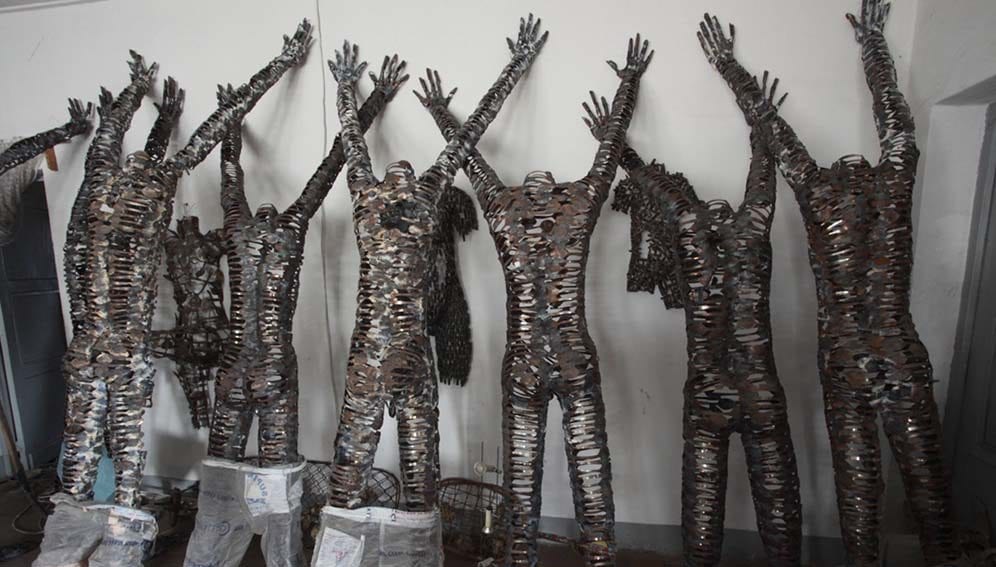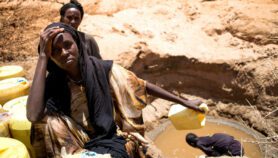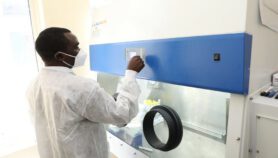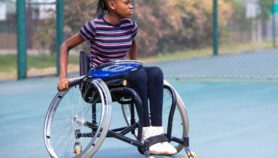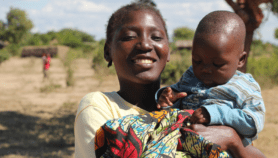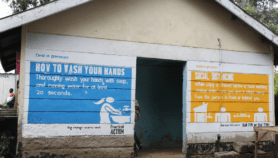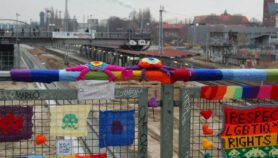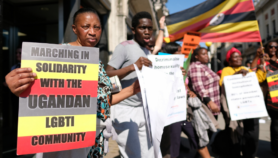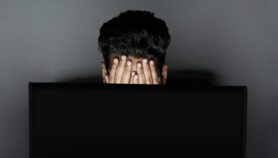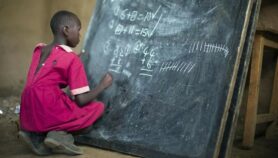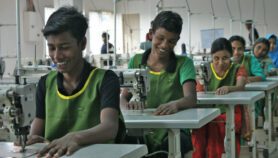By: Aisling Irwin
Send to a friend
The details you provide on this page will not be used to send unsolicited email, and will not be sold to a 3rd party. See privacy policy.
This article was supported by The Rockefeller Foundation Bellagio Center.
When video of a mass grave was shown to the military tribunal in Kalehe town, in the Democratic Republic of Congo last September, the atmosphere changed dramatically, according to Guy Mushiata. Two high-ranking commanders of a rebel militia stood accused of crimes against humanity — committing murder and torture — in 2012, in Kamananga and Lumenje villages, South Kivu.
They were leaders of the Democratic Forces for the Liberation of Rwanda, created by Hutu refugees in eastern DRC after the 1994 genocide in Rwanda, and they believed the villagers supported a rival local militia.
But they were not the only ones on trial: this was also a testing ground for the use of authenticated evidence gathered with a smartphone in a court of law, says TRIAL International, where Mushiata is DRC Human Rights Coordinator.
“We really believe that new tech can give a big push to getting accountability for certain crimes.”
Chiara Gabriele, TRIAL International
A video presented during the trial had been shot using the ‘eyeWITNESS to Atrocities’ app, developed by the International Bar Association, which embedded it with unchangeable data identifying the time and location. The human rights NGOs TRIAL International and WITNESS had prepared for its court debut, training judges and lawyers in how to discern authentic digital imagery.
The images of mass graves and victims seemed to shock the courtroom, says Chiara Gabriele of TRIAL International. They brought home the seriousness of the case, but also helped prove some legal points — demonstrating the extent of the graves, for example, which the courtroom could not visit for security reasons.
The evidence was accepted by the court and, on September 21, the soldiers received life sentences.
“It’s not the first time audiovideo evidence has been used in a trial in DRC,” says Gabriele. “But it’s the first time that evidence taken with a new application that is able to provide information on identification, verification and chain of custody has been used.”
As smartphones and connectivity penetrate the global South, atrocities are increasingly being filmed, photographed and uploaded to social media from personal devices. Meanwhile, remote sensing kit is showering servers with satellite imagery of events and, increasingly, this material is being used to investigate human rights issues.
Much of the sifting and analysis of this material, however, is being done in the global North. Campaigners want people in developing countries to learn how to assess the information too. But that’s easier said than done.
Open source explosion
In the DRC, the material was shot by lawyers to support their investigation. But so-called open source material — information that’s publicly available, for example on social media platforms — is also reaching the courts.
It has “worked its way into different areas that have to do with accountability for atrocities,” says Emma Irving, assistant professor of public international law at Leiden University in the Netherlands. “Not only through international courts and tribunals but also through UN fact-finding missions.”
There are 6,000 tweets going out every second and 500 hours of video going onto YouTube every minute, says Alexa Koenig, executive director of the Human Rights Center at the University of California, Berkeley, and co-editor of a forthcoming book on the subject.
“Everyone knows there’s a wealth of information out there in digital form,” says Koenig. “But no one knows, comprehensively, how to access it, how to preserve it, who to give it to and what to do with it, and then how to present it in a court.”
In the last few years, journalists, activists and academics have been developing the skills to conduct investigations based on open source digital data. One prominent example is a BBC Africa Eye investigation into a viral video of an execution, rumoured online to have taken place in Cameroon. The Cameroon government first dismissed the claim, but was forced to accept it when journalists proved it was true by establishing where, when and by whom the execution had taken place.
They did this by matching hills visible in the background to satellite imagery. Then they deduced the approximate date, because buildings in the video appeared in some satellite images and not others. Geometry skills applied to the shadows indicated the season. Then, the make of guns and style of uniforms were matched to those seen in Cameroonian military. A name uttered in the video also matched a Facebook profile.
But forensic work such as this takes training.
‘Seeding’ skills worldwide
Most of this training is being done by organisations in Europe and the United States – NGOs such as Amnesty International, investigative organisations such as Bellingcat, or academic centres such as Berkeley’s Human Rights Center.
Sam Dubberley, manager of the Digital Verification Corps at Amnesty International, believes it should go global. “It has to be something that’s done everywhere,” he says, both to tackle crimes and protect NGOs from those who use these techniques to manipulate evidence.
His programme at Amnesty is “seeding” investigation techniques worldwide through a network of volunteer students from human rights centres at six universities. The idea is that trained students will graduate, return to their home countries and spread the skills.
Adebayo Okeowo is a member of this network and a PhD student at the Centre for Human Rights at the University of Pretoria in South Africa. He says spreading these skills in Africa is increasingly urgent given the number of elections due to happen across the continent in 2019. But while he and colleagues have applied their techniques to investigations and disseminated them in South Africa, progress is slow: “Within the African space there isn’t a lot of this happening.”
Bellingcat, the online investigations organisation, is also “seeding” skills across the global South.
Christiaan Triebert, Bellingcat’s lead trainer, says the organisation has run over 40 workshops in countries such as Colombia, Iraq and Nigeria. It has also trained journalists from the Palestinian Territories, Yemen, Sudan, South Sudan and Myanmar.
Burden of proof
Though journalistic and fact-finding investigations fuelled by this data can help hold the powerful to account, it is another matter to use them in a court of law, according to Irving.
One reason is that the paper trail, or ‘chain of custody’, for the information needs to be scrupulously secure; another is that the legal system needs to be equipped to understand how to tell if data is authentic, according to The New Forensics, a report from Berkeley’s Human Rights Center.
For evidence to justify an arrest warrant, the standard of proof is only “reasonable grounds to believe”. In contrast, a successful prosecution needs evidence that is “beyond reasonable doubt”, says Irving.
How to demonstrate the authenticity of a Facebook video “beyond reasonable doubt” is the problem, explains Irving. That’s why little such evidence has been used in courts so far.
In the DRC, TRIAL International and WITNESS have been training people across the legal system in secure digital verification — from human rights defenders who tend to do the first documentation, to judges who need to understand how reliable the evidence is.
Training is also vital for working with open source material, says Koenig. “This [material] is something that we’re believing is increasingly going to hit national level courts … and judges and lawyers are going to have to grapple with what to do with all of this information flooding their systems.”
Berkeley’s Human Rights Center has been developing an International Protocol on Open Source Investigations, which will lay out legal and ethical norms on how to identify, collect and preserve open source information, as well as how to verify and analyse it.But developing countries still face obstacles. Even if digital evidence can be proven authentic, its use may be stymied by more traditional challenges, Gabriele points out: difficulties getting people to court because of poor infrastructure, stigmatisation of surviving victims, or a problems finding lawyers.
Irving wonders whether — in places where the rule of law is weak — those who film evidence may also be in increasing danger as awareness grows of how footage might be used.
“There are a lot of challenges,” Gabriele says, “but in general, what I see here in South Kivu, is that the justice process might actually be made to work.
“We really believe that new tech can give a big push to getting accountability for certain crimes.”
This article was supported by The Rockefeller Foundation Bellagio Center. For nearly 60 years the Bellagio Center has supported individuals working to improve the lives of poor and vulnerable people globally through its conference and residency programs, and has served as a catalyst for transformative ideas, initiatives, and collaborations.


